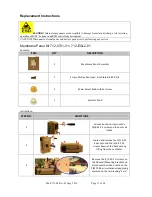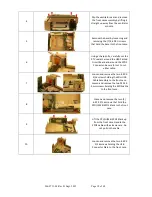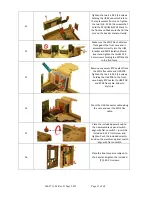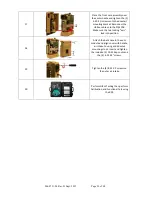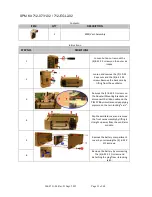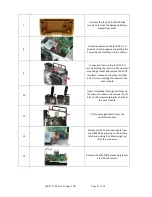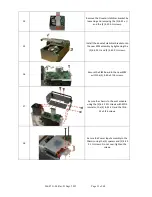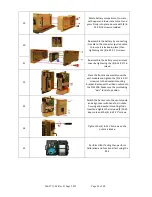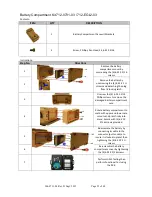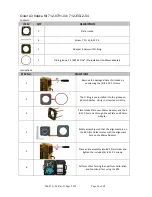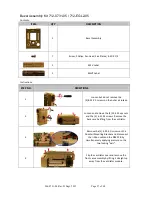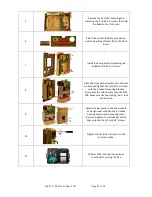
906-0731-04 Rev. B Sept. 2012
Page 13 of 68
horizontal rows of lines indicating its current capacity. When the battery is charging, these horizontal rows
of lines cyclically scroll vertically, one row at a time, from the bottom row to the top. When the battery is
fully charged, the icon is completely filled with lines and scrolling stops. Each line represents approximately
5% of battery capacity. During internal battery operation a horizontal line “disappears” as battery capacity
is reduced by a 5% increment. The BATTERY icon will flash off/on when a
B
ATTERY
P
OWER
L
OW
alarm occurs.
The icon will flash off/on and present with a diagonal line when no battery is connected.
Preventive Maintenance (PM)
Scheduled replacement of filters, batteries, seals and mechanical/pneumatic moving parts will ensure the
device is always operating at peak performance. The table below describes the scheduled interval for
routine parts replacement, calibration and functional testing. Ventilators used in extreme environments
may warrant earlier or more frequent maintenance scheduling.
Table 1 Maintenance Schedule.
Periodic Maintenance Check (PMC)
At start up, the device performs a self check that includes a check for pre-existing alarm conditions.
Following start up, the presence of alarm conditions is checked continuously. When in operation the
ventilator circuit connects to a pressure transducer in the ventilator. Periodically, the transducer
recalibrates itself using the ambient air pressure as a reference. This process maintains a consistent
transducer baseline over a wide temperature and altitude range to assure display, monitoring and triggering
accuracy.
The ventilator also automatically performs an AUTO CAL procedure that affects 3 transducer systems:
Compressor Flow, Oxygen Flow and Airway Pressure. The purpose of AUTO CAL is to compensate for small
temperature related drifts in the transducer offset (zeroing). The AUTO CAL is performed at start up during
the self check and then every 5 minutes thereafter. However, if a temperature change em/-1.5
o
C is
sensed, the AUTO CAL time interval is reduced automatically to assure a stable pressure measurement
baseline. This continuous correction for variations in ambient temperature and pressure enable the
ventilator to deliver targeted volumes and pressure over the entire operating altitude and temperature
ranges described in the operations manual.
The automated self check at start up and the AUTO CAL tests confirm that the device is operating within its
specifications when in use. If the start up or AUTO CAL tests fail, the unit will not operate. Because the
automated tests do not confirm that flow and pressure outputs from the device are verified against a
controlled external pressure, flow and temperature measurement device, the PMC procedure should be
done every 12 months or after 1,500 hours of use, or to reset the ‘performance maintenance check’ low
Maintenance Activity
Year after initial purchase of ventilator
1
2
3
4
5
6
7
8
Replace inlet oxygen and compressor foam
and disk filters
*
*
*
*
*
*
*
*
Perform a Periodic Maintenance Check
(PMC)
*
*
*
*
*
*
*
*
Replace the main battery
*
*
Replace the real time clock battery (RTC)
*
*
Inspect and replace if needed any internal
tubing, gaskets, or O-Rings that show signs of
wear
*
*
Inspect internal pneumatic & electro-
mechanical components
*
*

















